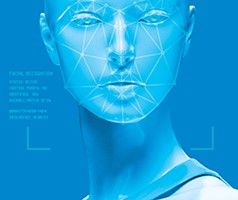AI 2.0: how forward-thinking retailers can leverage artificial intelligence for genuine gain
September 6, 2019Why cognitive computing is the next evolution in retail, and how forward-thinking retailers can leverage artificial intelligence for genuine gain
BY JESSE DONALDSON

A virtual marketing agent for every customer. Supply chains that automatically reroute a shipment to account for inclement weather. Dynamic systems that analyze and remember millions of customers, and adapt to their preferences, their behaviour, even their mood. An interconnected network involving computer vision, predictive analytics, pattern recognition, automation, the Internet of Things, and blockchain technology, presided over by Artificial Intelligence that can reason, remember, and adapt—all without the need for human oversight. While this may sound like retail science fiction, the reality is far from virtual.
Just ask Charbel Safadi.
“This isn’t just a science experiment anymore,” explains Safadi, the Canadian AI Leader for IBM. “It’s no longer about experimentation—it’s about scale. It’s about scaling this across an organization, from a marketing perspective, all the way down to the business infrastructure.
Twelve months ago, we were in the end stage of proof-of-concept, but now we’re into expansion. And if you’re not scaling these capabilities, you’re going to be at a competitive disadvantage.”
For many of Canada’s retailers, these technologies—gathered under the umbrella term “Cognitive Computing”—are still relatively unknown. But for those companies on the edge of early adoption (including major retailers like Staples, Sephora, and North Face), they are already revolutionizing their operations—increasing profits, reducing losses, leveraging massive data sets, expanding marketing capabilities, and maximizing supply chain agility in ways that would have seemed impossible even a decade ago.
“Over the last ten years or so, we’ve made significant strides in this arena,” explains Sanjay Chopra, Co-Founder and CEO of Cognitive Computing firm Cognistx. “There are certain things a computer can do very well. One of those is speech; in terms of word-error rate, computers are now at par or even better than human beings. The same is true of cameras—now computers can see things and analyze them. Natural Language Processing has become pretty advanced as well; if you have lots of unstructured data, or free text, computers can understand the gist of it, and analyze the text. They’re even getting good at emotion and sentiment analysis. Tasks where humans are good, computers are catching up. And they’re getting much better at tasks they were already good at.”
All watched over by machines of loving grace
While among North America’s retailers, Cognitive Computing is still in its early stages, business leaders clearly recognize its potential; according to a 2017 report by IBM’s Institute for Business Values, 91 per cent of CEOs already believe Cognitive Computing will play a disruptive role in their organization, and 94 per cent intend to invest in it. And, as both Safadi and Chopra point it, it’s not a moment too soon; as customer needs evolve, increasingly complicated systems are required to address those needs—not, Chopra explains, by lumping them into ever-larger demographic segments, but by using the power of AI to leverage each individual’s data, creating
personalized interactions and promotions on a granular level.
“The beauty of Cognitive Computing is that it learns over time,” he says. “The system can take real-time data into account, and then modify its behaviour. Imagine having one marketing person per customer—someone who understands them completely. The computer knows when
you last came into the store. It knows your preferences. It knows your transaction data, and understands you as a segment of one, and it’s able to send the right offers to you at the right time. We worked with an automotive client, and because we understood the customer as a Segment of One, we were able to predict with a very high degree of accuracy when they would need various services for their cars. And because of that, we were able to generate millions in incremental revenue. These were customers who used to come into the store once over two years. But, as a result of our engaged AI, the same customers are now coming in at least four times in the same time period, and redeeming multiple offers we sent them.”
Beyond simply marketing, some retailers, including Boots UK, have designed Digital Assistants to help improve the customer experience across all touchpoints—allowing consumers access to detailed product information, availability, and the ability to order products to a location of their choice—online or in-store. With more than 70 per cent of the global population set to have a mobile device by 2020, the integration of the online and offline world is crucial, Safadi argues. And the rise of Cognitive Computing allows retailers to combine these elements with increasingly complex datasets in increasingly targeted ways; Sephora’s Color IQ app allows customers to try makeup shades on a digital version of their face, and then helps them locate those colours in-store. Neiman Marcus customers can snap photographs of clothing items on the street and use the store’s digital assistant to find similar items in their inventory. Taco Bell uses speech recognition to let customers use AI to place their orders. Walgreens is even using data to track the spread of the flu, and stock their shelves accordingly. With each successive interaction, AI learns and improves. And it doesn’t end there.
“Visual recognition, which is another key element of AI, can look at facial expression to recognize sentiment, and begin to tailor the experience of the retail store toward the individual,” Safadi explains. “And this can also apply to other kinds of data—customers uploading an image of a shoe that they like, or a dress that they like, maybe via a social media image of a friend or colleague—with AI allowing a retailer to understand this unstructured data using visual recognition, and then link to items in their catalogue or an online store. Whatever the fulfillment process is, we’re going to see retailers moving toward an unstructured data approach, and tailoring the customer experience to mood, or to an understanding of their individual preferences.”
A cybernetic meadow

While many of Cognitive Computing’s most high-profile applications are on the customerfacing side, it can also be leveraged behind the scenes, bringing together AI, IoT, blockchain, data, and automation to create supply chains that are increasingly real-time and agile, without the need for human interaction.
“If you think about a traditional supply chain, it’s already preprogrammed, so to speak,” notes Safadi. “Products go from Point A to Point B. But when you start to think about real-time events or predictive events—like weather, for example—and you have the ability to take that level of unstructured data and dynamically adapt to those in real-time, that’s the premise and promise of Intelligent Automation. And we believe that in the next four years, we’re going to see many organizations move toward that real-time model—from the frontend all the way through to the fulfillment of that particular customer order. We’re entering a new phase of technological innovation.”
Beyond this, Cognitive Computing can allow retailers to engage in Demand Forecasting, using historic data and machine learning to anticipate customer needs—in advance and on a massive scale.
“Something Cognitive Computing is really good at is Anomaly Detection,” Chopra adds.
“It’s able to predict whether an order that came in makes sense or looks wrong somehow. It figures in historic demand, time of day, location, events or promotions, and can compare it to the ‘typical’ order at that time. The computer can figure out all of these problems using data and present them before they become problems. And this helps optimize the supply chain in all sorts of ways.”
For now, Chopra admits, Cognitive Computing has yet to be adopted on a widespread basis—mostly being concentrated within major retailers with similarly large budgets. For smaller companies looking to take the plunge, Safadi adds, capital can be a challenge, alongside a business culture that hasn’t yet evolved to embrace these new technologies. However, as costs come down, and views evolve, companies like Cognistx and IBM are set to give forward-thinking retailers an advantage in an increasingly AI-driven world.
“Moving forward, we want to promote the democratization of AI,” Chopra says, “so we can go to smaller businesses—ones without large budgets—and be able to deliver the same types of solutions.”
Mutually programming harmony
That said, Safadi explains, an advance in technology necessitates a more evolved business approach—especially when it comes to the ethical implications of analyzing such vast swathes of data.
“It’s exciting,” he says, “but the ethics of AI start to become very important. There’s a sense of responsibility that all organizations need to be focused on. It’s not just about developing cool technology that helps you create products for individuals. It’s about ‘good technology’—this intermarriage of technology and ethics, and making sure that organizations embracing AI are creating trust and transparency, and communicating that to the individual. It’s about adopting these technologies for good.”
And, as both Safadi and Chopra emphasize, the time for adoption is now; the time for making cultural shifts, seeking out partners, embracing technology, and breaking down internal siloes, so that forward-thinking retailers—like the AI they employ—can continue to learn and evolve over time.
“You need a data strategy,” Safadi warns. “Without information architecture, there’s no path forward—without IA, there’s no AI. Without the data, all of these cool widgets and capabilities aren’t going to be leverageable. You can’t train AI without data. So, the cultural mindset needs to change toward understanding data. If you haven’t done that, you’re at risk of being at a big competitive disadvantage. If you haven’t moved yet, you’re already behind.”
COGNITIVE DISRUPTION
91% of CEOs believe Cognitive Computing will play a disruptive role in their organization.
94% of CEOs intend to invest in Cognitive Computing. Source: IBM’s Institute for Business Values



